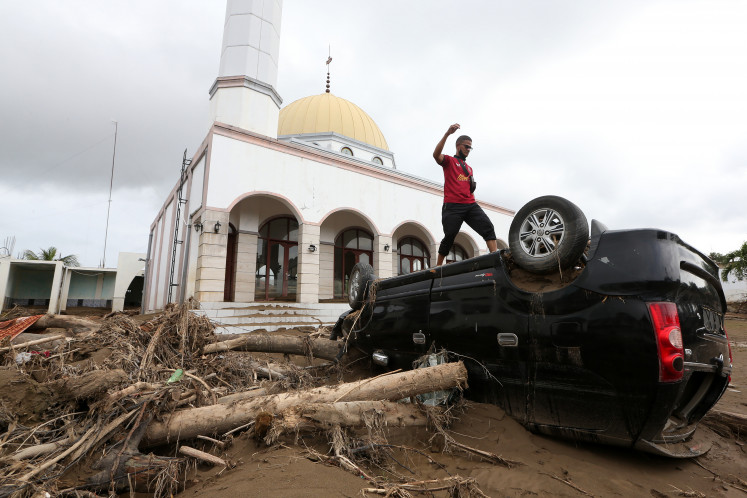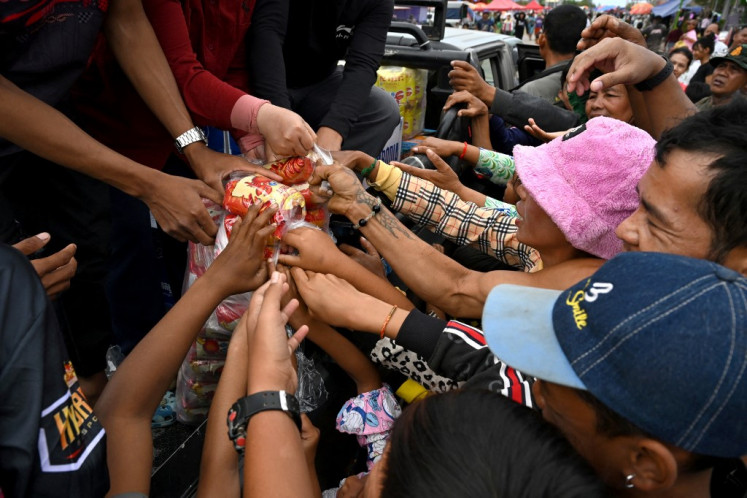Popular Reads
Top Results
Can't find what you're looking for?
View all search resultsPopular Reads
Top Results
Can't find what you're looking for?
View all search resultsLearning from history
A preventive shot: After the pandemic subsided in 1920, the dutch colonial government pledged to no longer take risks with infectious diseases
Change text size
Gift Premium Articles
to Anyone
A
span class="caption">A preventive shot: After the pandemic subsided in 1920, the dutch colonial government pledged to no longer take risks with infectious diseases. Mass vaccination campaigns were launched, with the government sending out new breeds of doctors, graduates of a colonial government-sponsored medical school, to big cities across Java. Courtesy of UI Flu Pandemic History Research Team
The H1N1 virus has swept the world before, with millions succumbing to it. But that means it has provided lessons we can learn from — if we choose to learn, that is.
The nearly forgotten pandemic, Western scholars call it, when they refer to the 1918 flu pandemic — also known as Spanish flu — which claimed somewhere between 50 million and 100 million lives around the world.
It was barely recognized in Indonesia until a group of historians revealed just how devastating the 1918 flu pandemic was in the archipelago.
In Tana Toraja in Sulawesi, where 10 percent of the population reportedly died from the flu, the then-mysterious outbreak was called Raa’ba Biang or fallen trees.
“Three of my aunts died at the same time. They all died after days of fever,” said Toraja community head Kun Masora, as quoted by University of Indonesia History of Flu Pandemic Team.
Masora’s relatives are only a few of the “trees that fell” during the outbreak. In November 1918 alone, 400,000 deaths due to influenza were recorded.
According to one historical record, on July 1, 1918, residents of Tanjong Pandan in the eastern part of Sumatra were infected by passengers of a ship arriving from Singapore. It didn’t take long for the disease to spread to Batavia, Medan and several areas in Kalimantan.
In that same month, West Java’s Bandung, Central Java’s Purworejo and Kudus and three other cities in East Java were affected. By the end of that month, major outbreaks of the disease had been recorded in most parts of Java and Kalimantan.
And that was just the beginning. It went on to propel the “fallen trees” in Tana Toraja. However, despite a high rate of infection, between July and August the mortality rate was generally low. For a few weeks afterward, the Dutch colonial government recorded a decline in cases and fatalities.
Then, a month later, things turned nasty: It peaked in November 1918, with mortality rates far surpassing the year’s cumulative outbreaks of other infectious diseases.
“The November epidemic covered a much larger territory; there were few areas in Netherlands East Indies that were not infected by the influenza,” historians write. Records showed that most of those who died were young adults.
Fast forward to the present, just months after the World Health Organization (WHO) declared the “swine flu” a pandemic. Nearly 5,000 people have reportedly died from swine flu since it emerged this year and developed into a global epidemic, WHO said last week.
Indonesia’s own count from August reveals that six people have died from the H1N1 virus, and 1,033 had been seriously infected, the Health Ministry said.
Will we see a similar cycle to the 1918 pandemic?
Alternative cure: The absence of medicine to cure the deadly flu forced people to use alternative treatments, such as jamu (traditional herbal drink). During the 1918 pandemic, temulawak (a wild-ginger based drink) was often promoted as a healthy alternative to increase people’s stamina and help them survive the flu. Courtesy of UI Flu Pandemic History Research Team
“Currently, there haven’t been any new cases reported,” the Health Ministry’s director general for disease control and environmental health Tjandra Yoga Aditama said.
“We’ll never know for sure whether there will be a second wave to the declared pandemic. All we can do is maintain a high level of alertness.”
He added that the government is still conducting airport surveillance as part of its efforts to contain any further possible spread of the virus.
The whole world is on alert, as Bayu Krisnamurthi, head of the National Commission for Avian Flu, noted.
“In the northern hemisphere, the fear of a second wave comes from the fact that they are facing winter, which is when the regular flu usually spreads,” he said.
In Indonesia, the coming rainy season is a reason to be alert, as that is when cases of infection usually peak, as with avian flu, he added.
Surely, no one is expecting a return of the virus as malignant as that seen in 1918, but getting too complacent is certainly not an option.
And the possible disastrous effects of the pandemic are not all we can learn from history: Learning from the experience of handling the situation is far more valuable.
In early 1920, the Dutch colonial government issued an “Influenza Ordinance” to ensure that response and mitigation measures were carried out promptly and correctly and that any future outbreaks in the archipelago could be rapidly detected and contained, the history research team reveals.
In addition to issuing the law containing information about influenza symptoms, response and prevention measures for people and administrations across the nation, they also took into account risk communication measures by instructing the information office to spread information on pandemic influenza.
Cultural approach: In its bid to contain the 1918 flu epidemic, the Dutch authorities issued health campaigns in Javanese featuring wayang figures more familiar to locals. Courtesy of UI Flu Pandemic History Research Team
A brochure was printed to promote awareness about habits to prevent influenza infection among the public. In Java, the campaign brochure was printed in a way to suit the locals. Written in Javanese, the messages were spoken through wayang figures familiar to locals.
While experts believe that the keystone of influenza prevention is vaccination, behavioral change is no less important.
Indeed, in times of troubles like pandemics, it’s not only the response from the authority that counts. A high level of awareness among the community could potentially prevent further outbreaks.
“There should be a cultural approach to solve problems that could not be solved through medical efforts,” said Purwanta Iskandar, an anthropologist involved in the campaign for the prevention of the spread of the flu.
Currently, his team is focusing their efforts on educating children, in addition to the more general campaign aimed at the community at large.
“An educational campaign on this issue must be carried out in a creative and fun way. Children learn faster and they become the agents of change,” he explained. “For the general public, every possible means should be explored, from the traditional and religious to modern ones.”
Most recently, the Indonesian Ulema Council in Makassar published a book on the flu pandemic and its prevention, quoting related Islamic teachings.
“Changing behavior cannot be done in an instant. That’s why we believe that targeting children means investing in the future,” he added.
And perhaps, along the way, the efforts made could help prevent not only a flu pandemic, but also the long list of infectious diseases that have persisted in Indonesia for decades.












